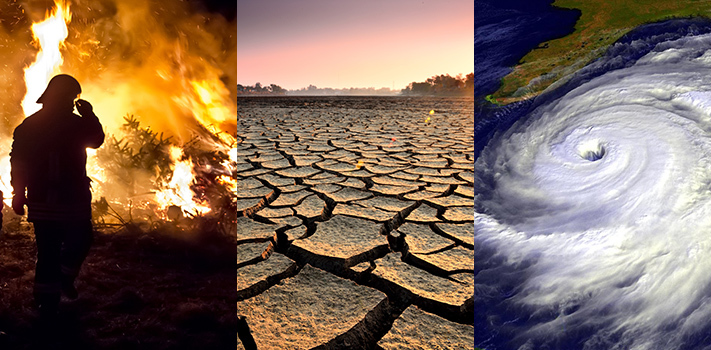Climate change is not a hoax and humans are responsible for the majority of the earth's increase in temperature, according to Texas A&M University-Texarkana professor Dr. David Allard. Allard, who is involved with the Climate Reality Project, said humans are dumping 110 million tons of man-made global warming pollution into the atmosphere every 24 hours.
"Most of that is carbon dioxide, but there's also methane, CFCs (chlorofluorocarbons) and other things that contribute to that," he said Tuesday during the January meeting of Friends United for a Safe Environment. "If we can control carbon dioxide, then perhaps we'll slow down this process."
He explained how global warming works and said that a large concentration of carbon dioxide prevents the release of infrared radiation the atmosphere has absorbed from the sun.
"More of the outgoing infrared radiation is trapped. It's like a blanket around the planet," Allard said. "The more carbon dioxide in the atmosphere, the thicker the blanket and the warmer it's going to get." He added that methane from cows and landfills is an even stronger driver of the heating process. Factors that contribute to the carbon dioxide levels include thawing permafrost, air transportation, oil production, crop burning, fertilization, forest burning, coal plants and land transport, along with industrial agriculture and industrial processes.
Gases from each of these has increased global surface temperatures dramatically, he said, with temperatures rising significantly since 2000.
"The hottest year on record was 2016," he said. "When we say that, what they've done is taken temperatures from different places around the world, so they're not talking about the temperature in Texarkana, they are taking about the change in temperature worldwide. They took thousands of readings from different places around the planet and that's how they were able to determine that we have those changes."
The heat and the rise in temperature causes a number of problems, he said, including an increase in heat stroke, storms, wildfires, drought and loss of animal life.
"The ocean is taking in a large amount of this heat," Allard said. "The heat accumulates in the atmosphere, but the ocean picks it up, so they oceans are warming up. That's dangerous for marine life, it's harder on coral reefs, the fishes. Storms are also getting stronger."
In 2015, three category five hurricanes were in the Pacific Ocean at the same time—Kilo, Ignacio and Jimena.
"The number and strength of these storms is incredible," he said. The warming process puts the hydrological cycle in higher gear and creates the stronger storms, he explained.
"The same extra heat that evaporates more water from the ocean causes bigger downpours and floods," Allard said. "It pulls moisture even more quickly from the soil, causing longer and deeper droughts. The earth's balance is off."
The warming has also significantly reduced the size of the glaciers in the Greenland ice cap and increased major cities' risk of flooding due to rise in sea levels. Many around the world are threatened and Miami, Fla. is the one at greatest risk in the United States, he said.
"Climate change is also a medical emergency," Allard told the group. "From a reduction in food supply, to heat stress, it will harm people and it is a real emergency."
Top diseases are also spreading rapidly due to the warming, including the West Nile virus, Chagas disease, dengue fever and the Zika virus.
Animals are also affected by the increase in temperature, with some already having gone extinct because their habitats changed.
"We are now at risk of losing up to 50 percent of all land-based species in this century," he said.
Many climate change deniers simply have not looked at the data, Allard said, adding that 98 percent of research supports the increase of emissions and temperatures over the years.
"How we can not see this is serious and how can we not address it? How can we ignore it?" he asked. "I don't think there's any doubt that we have to change."
Those changes can happen individually by choosing to be more responsible with power, Allard said. For example, using LED bulbs, driving an electric or hybrid car and installing solar panels on homes. Wind power is also being used around the world and Texas is one of the largest states in the production of wind energy.
"Yes, we can change," he told the group. "Will we change? We can only hope."
More information on global warming and how to advocate for cleaner energy can be found at www.climaterealityproject.org.



.jpg)